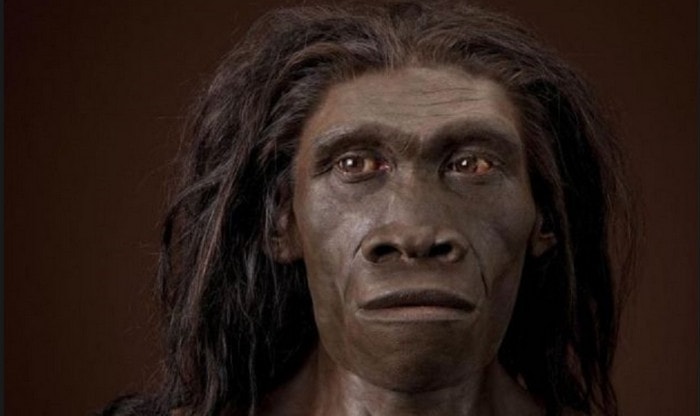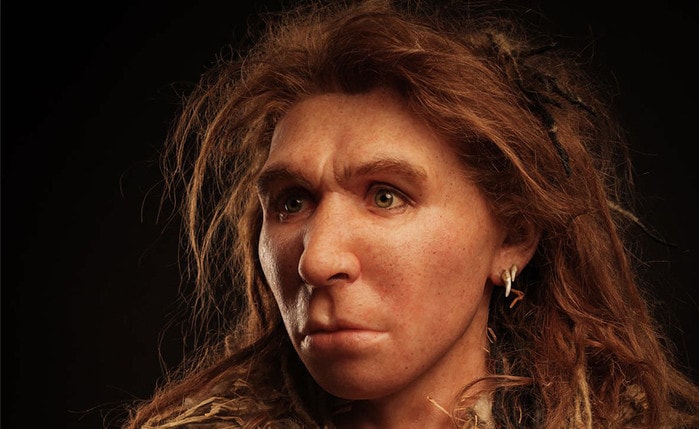The main stages of human evolution. Earliest, ancient and first modern humans
Man and modern great apes are not only similar to each other in their morphological and physiological features, but are also closely related. They are two different branches of the same trunk, i.e. descend from one common ancestor.
Such ancestors were ancient, extinct already several million years ago, medium-sized (the size of a medium-sized dog) monkeys, called propliopithecus. Their homeland was the northeastern part of Africa. They lived in trees and ate plants. From these monkeys, evolution went in different directions.
By divergence, the ancestors of modern great apes were formed - orangutans and gibbons, as well as driopithecus (tree monkeys). It is possible that dryopithecus gave rise to several branches of fossil forms, including very large (up to 2.5 m in height) ape-like creatures - Gigantopithecus.
One of the types of driopithecus was, obviously, the branch from which the development of the ancestors of modern man began. This form, by divergence, formed a large number of Australopithecus species that lived in East and South Africa. These monkeys lived on the plains, they used mainly their hind limbs for movement, i.e. were upright. Their growth reached 120-140 cm, the volume of the skull was about 500 cm 3.
The most ancient Australopithecus lived about 6 million years ago. years ago, the later ones became extinct about 0.5 million years ago. years ago. However, Australopithecus did not yet have tools. Obviously, for defense and attack, they could only use stones and sticks, as modern apes do.
Table - the main stages of human evolution
| stage of evolution | Description |
|---|---|
| Stage I - archanthropes | The volume of the brain is 800 cm 3. The first stone tools (scrapers, arrowheads, stone axes). Lack of articulate speech. The most advanced used fire (they only knew how to support it). |
| Stage II - paleoanthropes | The volume of the brain is 1300-1400 cm 3. They know how to make fire with the help of stones. The first articulate speech appears. Stone tools are carefully processed, bone ones appear (combs, needles). At this stage, the burials of the dead were carried out, accompanied by rituals. |
| III stage - neoanthropes | The volume of the brain is 1500-1800 cm 3. Transition from biological to social revolution. The first races of man are formed. Culture is developing (not only tools are made, but also decorations). |
Stage I - ancient people (archanthropes)
About 3 million years ago, large ape-like creatures resembling Australopithecus lived in East Africa. Their remains were found in East Africa, in Kenya on the shores of Lake Rudolf. Their brain volume reached 800 cm 3 , but the most important thing is that in the same layer where the bones of this human ancestor were found, there were also very primitive stone tools.
It is difficult to say whether these creatures were already people or belonged to Australopithecus. The presence of primitive tools made of pebbles, processed by blows against other pebbles, allows some researchers to consider them "people from Lake Rudolf" (R. Leakey's term) and attribute them to the first stage of human development.

This stage I was called the most ancient people, or archanthropes. It includes many different finds of skeletal remains. They were made in Africa (Olduvai Pithecanthropus), in Asia (Javanese Pithecanthropus and Sinanthropus) and in Europe (Heidelberg Man). They lived at different times: the most ancient - more than 1 million years ago. years ago, more "young" - 400 thousand. years ago. All these finds are combined into one group of archanthropes according to three main features:
- The volume of the brain is within 1000 cm 3 and only in Sinanthropus a little more - 1100 cm 3;
- lack of articulate speech, as evidenced by the absence of a chin protrusion;
- the presence of the most primitive stone tools - scrapers, points, axes.
Only the most progressive of them - the synanthropes - used fire, as evidenced by the many-meter layers of ash found in the parking lots.
Stage II - ancient people (paleoanthropes)
Stage II - ancient people, or paleoanthropes, were widespread in Europe, Asia and Africa. The earliest of them appeared more than 250 thousand years ago. years ago, the latter disappeared about 40 thousand years ago. years ago.
Ancient people had a height of 150-160 cm, the volume of the brain was about 1300-1400 cm 3 (approximately the volume of the brain of a modern person). However, the skull of ancient people was characterized by the development of superciliary arches, a sloping forehead, and a significantly developed lower jaw. A chin protrusion already appears on it, which makes it possible to assume the presence of articulate speech.

The most famous finds made in Europe are called Neanderthals (after the name of the Neandertal valley near Düsseldorf in Germany).
At this stage of development, ancient people constantly used fire, and they already knew how to get it using stones. Stone tools were carefully processed, in addition to stone ones, bone ones are also used. Finds of bone needles testify to the presence of clothing made from animal skins. It is characteristic that at this stage, the ancient people buried the dead, which was probably accompanied by certain rituals.
Stage III - first modern humans (neoanthropes)
Stage III in human evolution - the first modern people, or neoanthropes. They appeared about 40 thousand years ago. years ago and were already considered Homo sapiens- a reasonable person. Their brain volume was the same as that of our contemporaries - 1500-1800 cm 3, height - 170-180 cm.
Findings of neoanthropes have been made in various places on the globe. The most famous of them, made in France near the town of Cro-Magnon, are Cro-Magnons.
It is at the third stage of human evolution that rock art appears.
This stage is characterized by three main features: the cessation of biological and the beginning of social evolution; the formation of the main races; a high level of cultural development, which is characterized by the processing of not only stone tools, but also jewelry, stone figures, and drawings. All this testifies to the appearance at this stage of abstract thinking.
In human evolution there were many side branches that ended in complete extinction. At the same time, different groups of archanthropes could live, and stronger and more developed forms could exterminate those who were lagging behind in their development.

Eating meat played an important role in the evolution of human ancestors, since game hunting stimulated selection, and the high calorie content of meat made it possible to eat less often.
With the development of social relations, care for the elderly as carriers of socially useful information began to develop. Neoanthropes have already begun to show altruistic inclinations, which determined the advantages of their owners in the conditions of life in society.
The greatest achievement of Homo sapiens was the domestication (domestication) of animals and the beginning of the cultivation of plants. This was the most important step towards the liberation of man from the influence of the environment. As a result of the development of thinking, a person reaches a high understanding of nature, begins to influence it. It is Homo sapiens that can be defined as "matter that knows itself."
